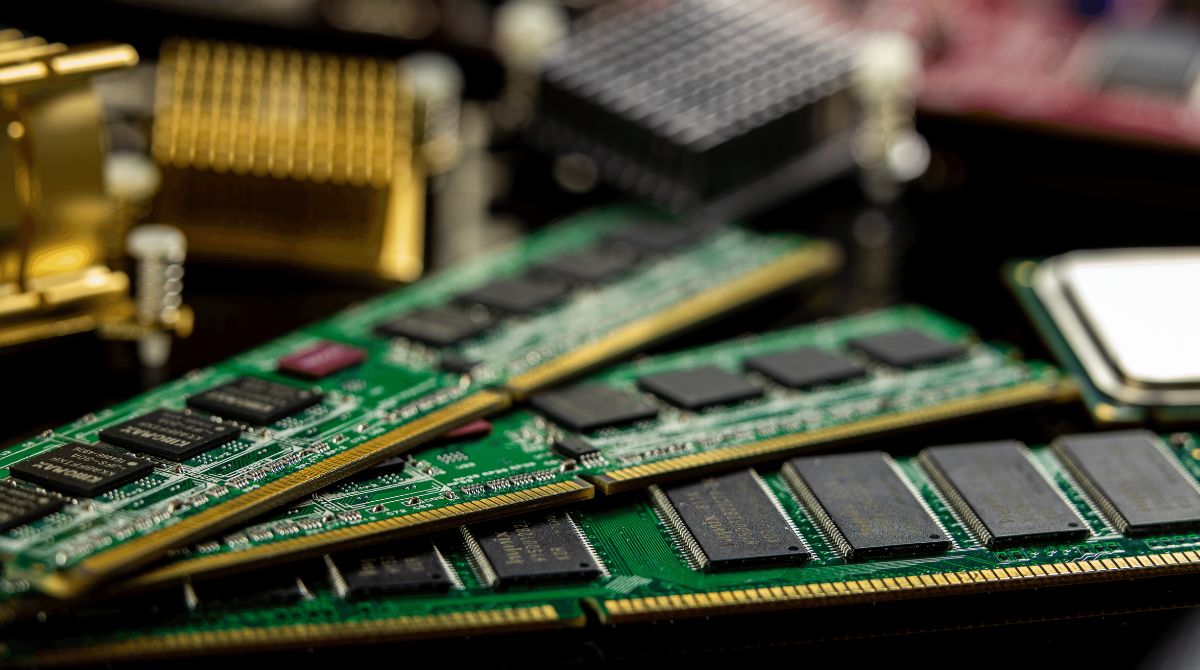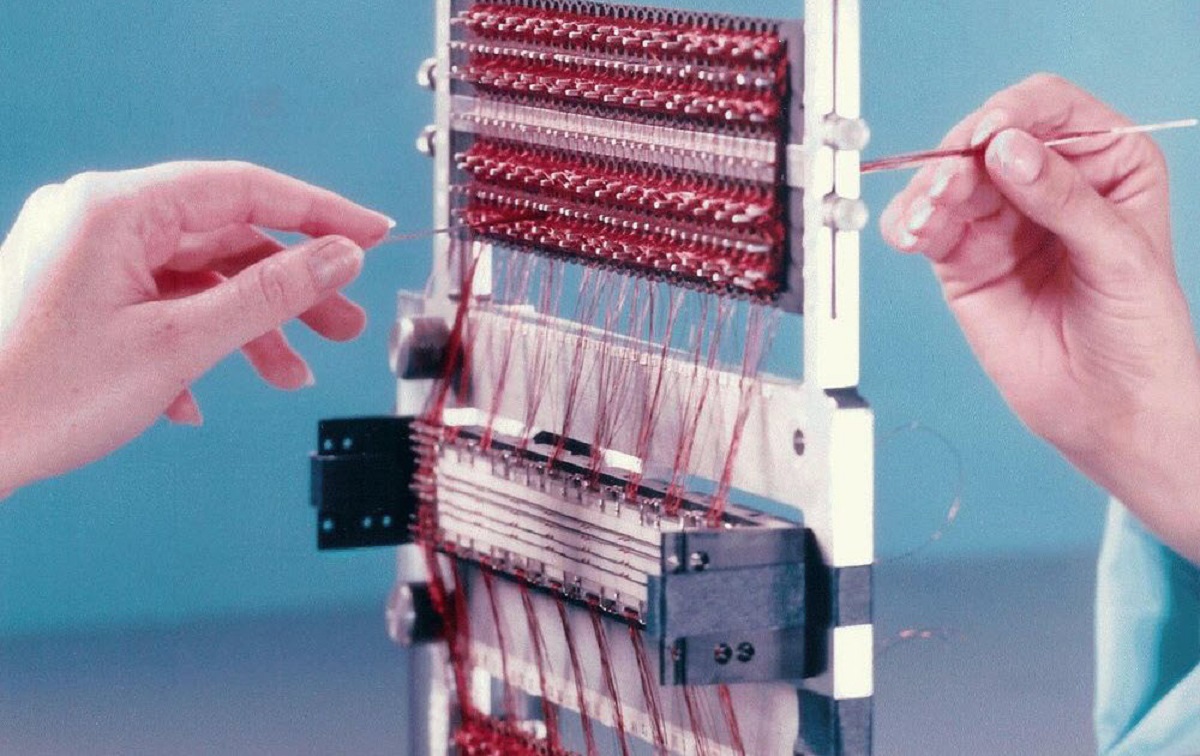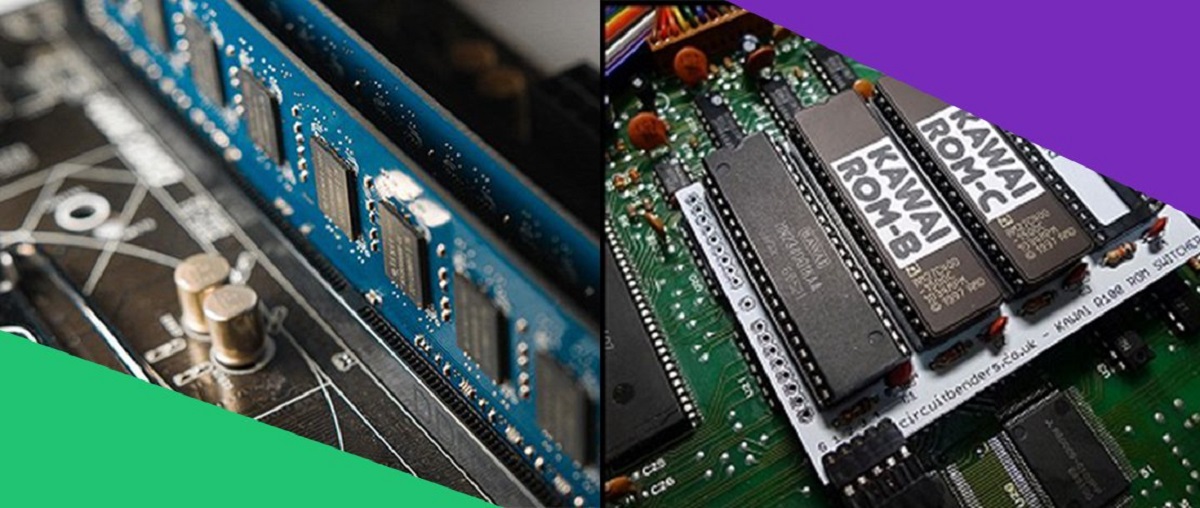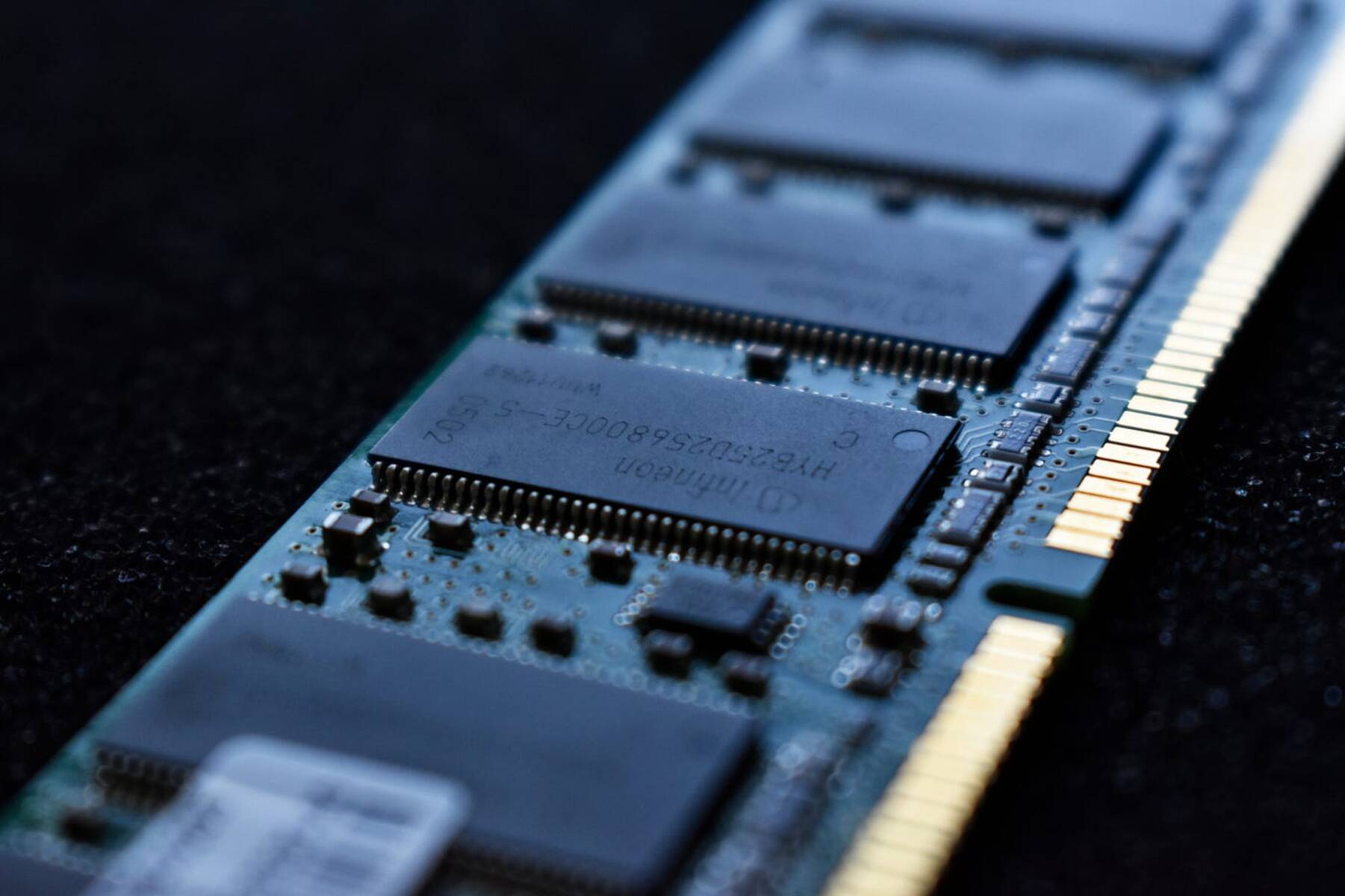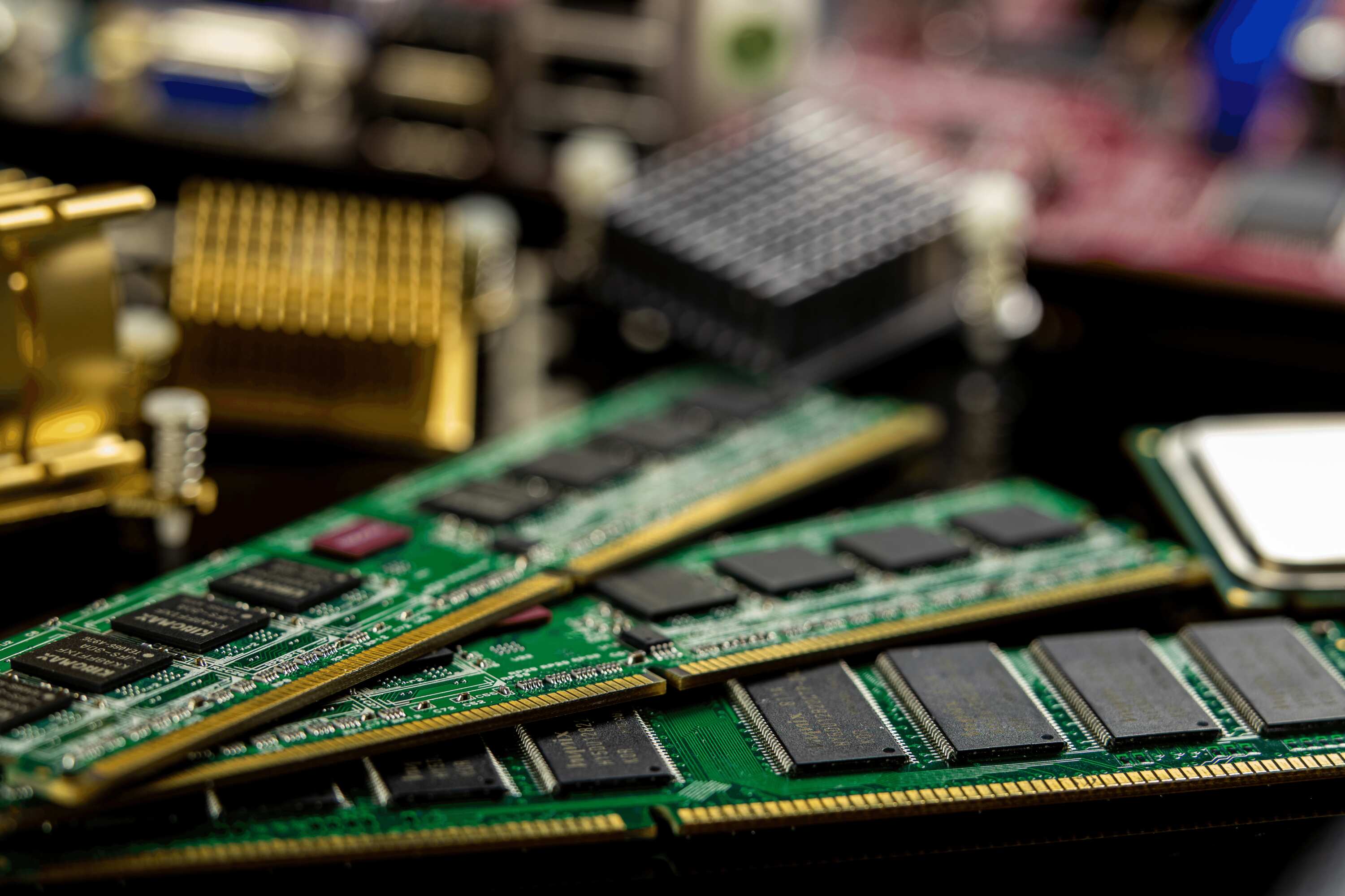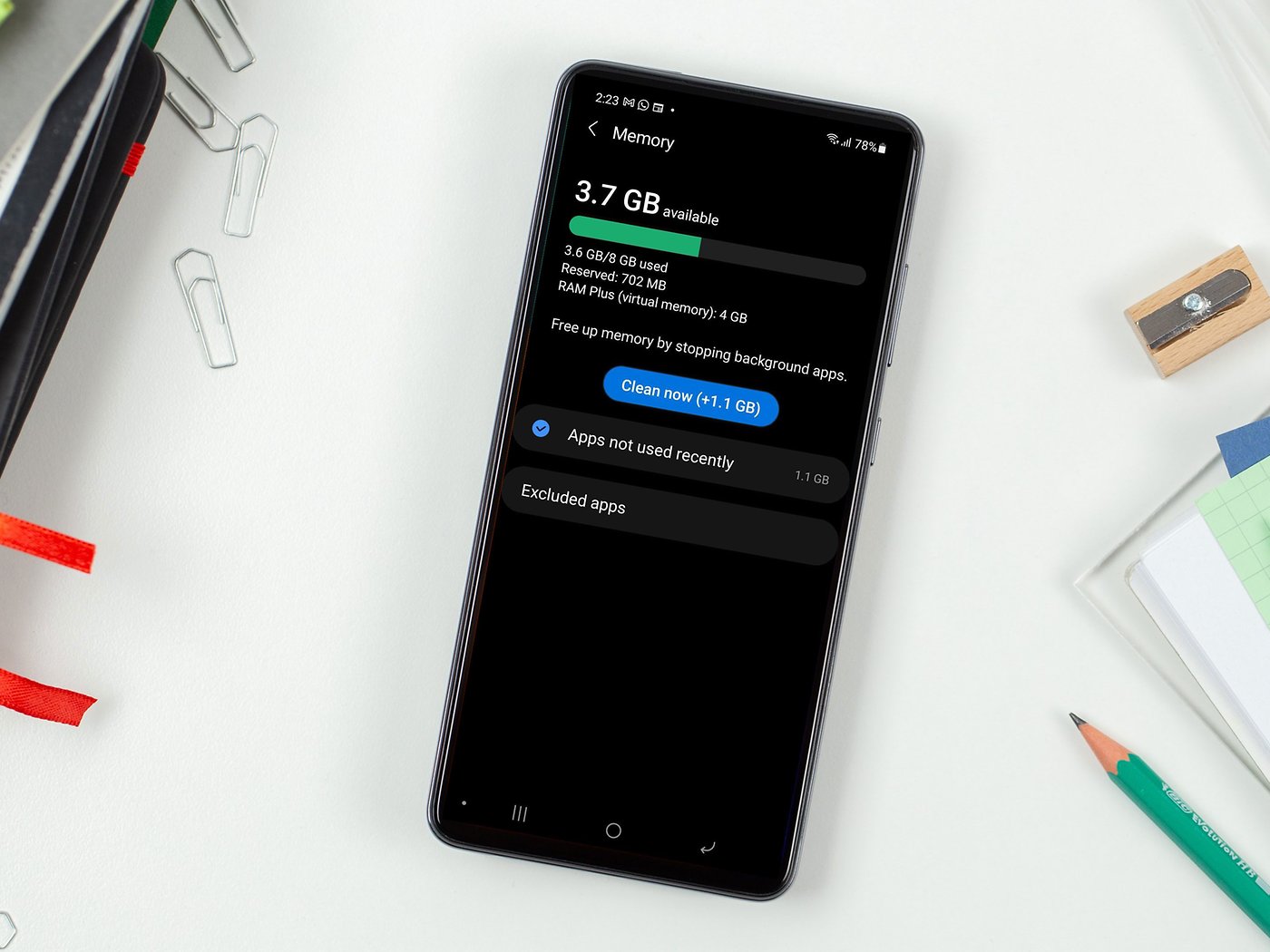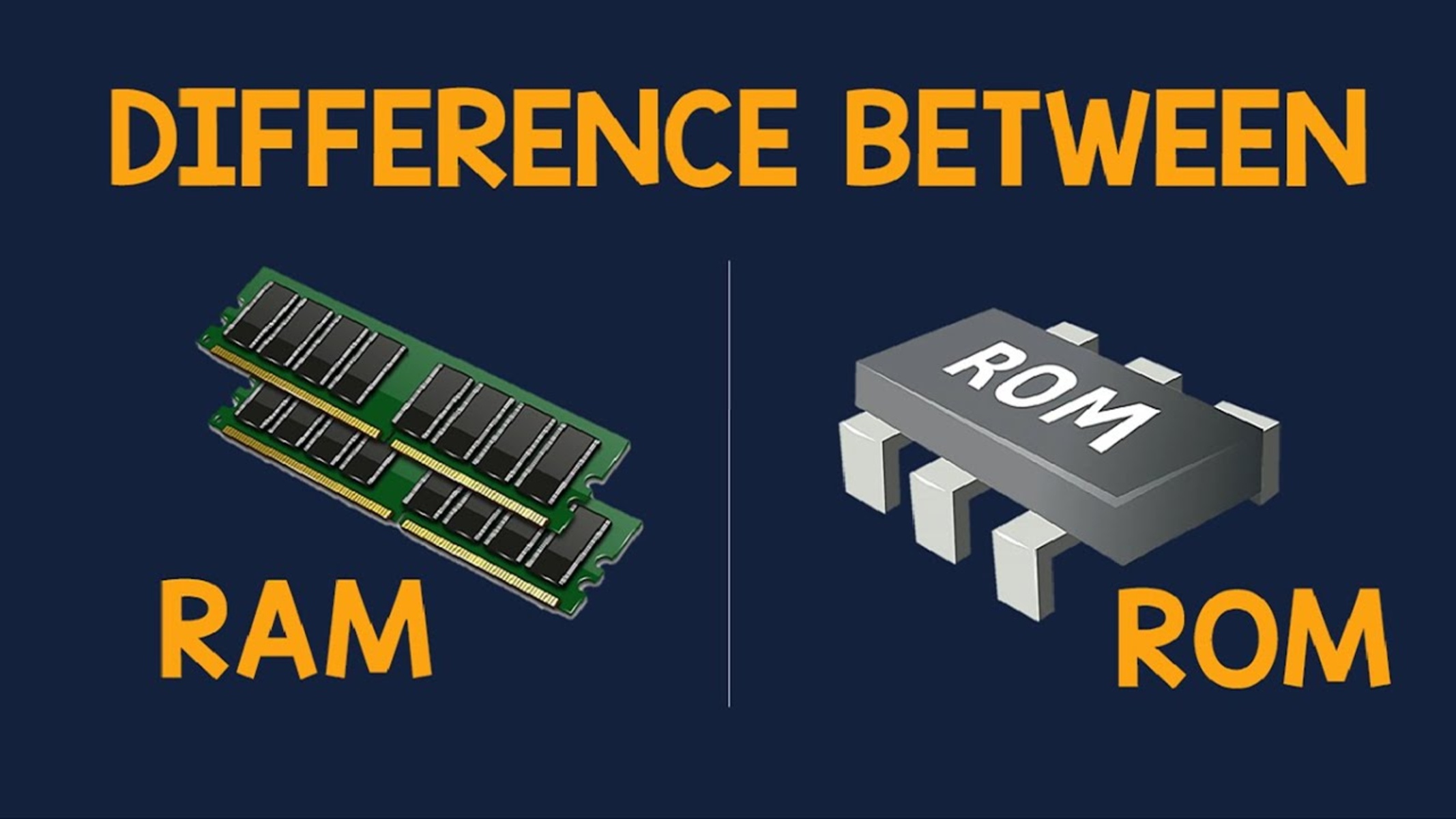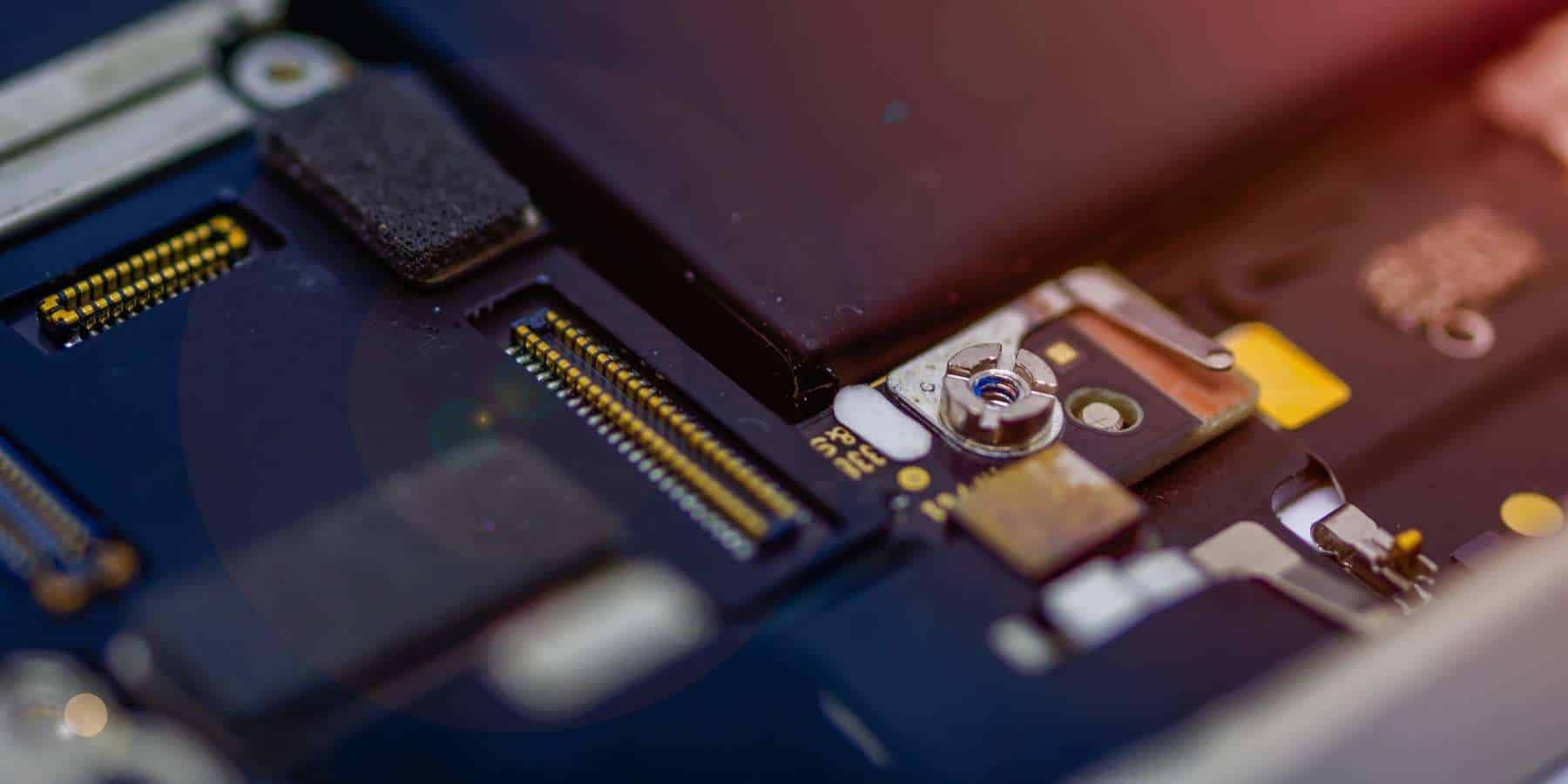Introduction
When it comes to understanding computer memory, two commonly used terms that often pop up are RAM and ROM. These acronyms may sound familiar, but what exactly do they mean and what sets them apart? In this article, we will explore the difference between RAM (Random Access Memory) and ROM (Read-Only Memory) to shed light on their distinct functionalities and roles in a computer system.
To begin with, RAM and ROM are both types of computer memory, but they serve different purposes and have different characteristics. RAM is a volatile memory that provides temporary storage for data that is actively being used by a computer’s processor. It is commonly referred to as “temporary memory” or “working memory” because its contents are constantly changing as the computer performs tasks. On the other hand, ROM is a non-volatile memory that stores permanent instructions and data that are essential for the computer’s operation. It is often called “permanent memory” or “firmware memory” since its contents remain intact even when the computer is powered off.
The primary function of RAM is to provide quick and temporary access to data that the processor needs to perform its tasks effectively. Think of it as a workspace where the computer can swiftly retrieve and modify information. Programs, applications, and data that are currently in use are loaded into RAM to facilitate efficient processing. The more RAM a computer has, the more data it can store and access simultaneously, leading to better overall performance.
On the other hand, ROM is responsible for storing vital instructions and data that are necessary for the computer to boot up and initialize various hardware components. It contains the initial or “bootstrap” code that kicks off the computer’s startup process. Additionally, ROM can also store firmware or software specific to the computer system, such as BIOS (Basic Input/Output System) or UEFI (Unified Extensible Firmware Interface), which are essential for the computer’s proper functioning.
Definition of RAM
RAM, or Random Access Memory, is a type of computer memory that is used for temporary data storage while the computer is in operation. It is often referred to as the “working memory” of a computer since it allows the processor to quickly access and manipulate data that is actively being used.
RAM is volatile, meaning that its contents are lost when the computer is powered off or restarted. This is because RAM relies on electrical power to retain information. When the power is cut off, the stored data disappears. As a result, RAM is designed to provide fast read and write access to data, enabling the computer to efficiently handle multiple tasks simultaneously.
The capacity of RAM is measured in gigabytes (GB) and determines how much data can be stored and accessed by the computer at any given time. Computers with larger amounts of RAM tend to be more responsive and capable of running resource-intensive applications or multitasking without slowing down.
RAM is organized into memory modules, typically in the form of integrated circuit boards known as DIMMs (Dual In-Line Memory Modules). These modules are plugged into slots on the computer’s motherboard, allowing for easy expansion or replacement of memory.
There are different types of RAM, including DDR3, DDR4, and DDR5, each with varying speeds and capabilities. The speed of RAM, measured in megahertz (MHz), determines how quickly data can be read from or written to the memory. Higher-speed RAM allows for faster data transfer and better overall system performance.
In summary, RAM is a volatile memory that provides temporary storage for data that the computer’s processor actively uses. It enables fast read and write access, contributing to the efficiency and responsiveness of the computer. The capacity and speed of RAM play crucial roles in determining the overall performance of a computer system.
Definition of ROM
ROM, or Read-Only Memory, is a type of computer memory that stores permanent instructions and data that are essential for the operation and functioning of a computer system. Unlike RAM, ROM is non-volatile, meaning that its contents remain intact even when the computer is powered off or restarted.
ROM is often referred to as “firmware memory” because it contains pre-programmed data that cannot be modified or written to by normal computer operations. It is designed for long-term storage of information that needs to be retained, even when there is no power supply. This makes ROM a reliable and integral part of the computer’s infrastructure.
One of the primary functions of ROM is to store the initial set of instructions, known as the bootstrap code or boot loader, that initiates the startup process of the computer. This code instructs the computer on how to load the operating system from the storage devices, such as hard drives or solid-state drives, into RAM for further execution.
In addition to the bootstrap code, ROM can also store firmware or software specific to the computer system, such as BIOS (Basic Input/Output System) or UEFI (Unified Extensible Firmware Interface). These firmware programs provide low-level functionality and act as intermediaries between the hardware components and the operating system. They ensure proper communication and coordination between all the system’s elements.
Due to the read-only nature of ROM, the data stored within it is protected and immune to accidental modifications or erasure, providing stability and security to the computer system. However, this also means that ROM cannot be easily updated or changed by users. Any updates or modifications to the firmware memory typically require specialized tools or replacement of the ROM chip on the motherboard.
In summary, ROM is a non-volatile memory that stores permanent instructions and data necessary for the operation of a computer system. It contains the initial boot code and firmware programs, which allow the system to start up and facilitate communication between hardware and software components. ROM provides stability and security to the computer system and cannot be easily modified or updated by users.
Functionality of RAM
The functionality of RAM, or Random Access Memory, lies in its ability to serve as a temporary working memory for a computer. It plays a crucial role in the efficient execution of tasks by providing quick access to data that is actively being used by the computer’s processor.
RAM is designed to read and write data at a fast pace, allowing for seamless multitasking and smooth operation of applications. When a program is launched, its relevant data and instructions are loaded into RAM to be accessed by the processor. This ensures that the necessary data is readily available for quick retrieval and manipulation, enhancing the overall performance of the computer.
One of the key functionalities of RAM is its ability to enable quick access to data. Unlike other types of storage, such as hard drives or solid-state drives, RAM does not rely on mechanical or magnetic mechanisms for data retrieval. Instead, it uses electrical circuits to store and retrieve data, resulting in significantly faster read and write speeds.
Moreover, RAM allows for random access, meaning that data can be accessed in any order, regardless of its physical location within the memory. This random access capability is crucial for efficient multitasking as the processor can quickly switch between different tasks, accessing their respective data stored in RAM without delays caused by searching through sequential storage.
The size of RAM plays a significant role in the functionality it offers. A larger RAM capacity allows for the storage of more data, reducing the need for constant data swapping between RAM and other storage devices. With more data readily available in RAM, the computer can execute tasks faster and handle resource-intensive applications smoothly without slowdowns or lag.
Another notable functionality of RAM is its dynamic nature. As the computer performs various tasks and operations, the contents of RAM constantly change, adapting to the system’s needs. Data that is no longer needed or is not actively used is replaced with new data, ensuring that the available space in RAM is optimized for efficient data storage.
In summary, the functionality of RAM lies in its ability to provide quick access to data, enable seamless multitasking, and enhance overall system performance. Its fast read and write speeds, coupled with random access capabilities, make it an essential component of a computer’s architecture. The size of RAM and its dynamic nature further contribute to its functionality by accommodating the system’s data needs and optimizing data storage.
Functionality of ROM
The functionality of ROM, or Read-Only Memory, lies in its role as a permanent storage for essential instructions and data that are crucial for the operation of a computer system. Unlike RAM, ROM is non-volatile, meaning its contents remain intact even when the power is turned off or the system is restarted.
One of the primary functionalities of ROM is to store the computer’s firmware. Firmware is software that is embedded into hardware devices, providing low-level instructions and functionality. This includes the system’s BIOS (Basic Input/Output System) or UEFI (Unified Extensible Firmware Interface), which are responsible for initializing hardware components and providing an interface between the operating system and the computer system.
ROM also plays a critical role in the computer’s boot-up process. The bootstrap code, stored in ROM, contains the initial instructions that the computer follows when it is powered on. This code is responsible for loading the operating system and other necessary files from storage devices, such as hard drives or solid-state drives, into the computer’s RAM. Without ROM, the computer would not be able to start up and operate properly.
Furthermore, ROM provides a secure and reliable storage medium for critical data that should not be altered or modified. Since ROM is read-only, the data stored within it is protected from accidental modifications or erasure. This makes ROM ideal for storing manufacturer-specific software or firmware that is essential for the device’s operation.
The functionality of ROM also extends to the preservation of historical data and legacy software. ROM can store legacy programs, such as games or software applications, that were designed to run on specific hardware configurations. By preserving this software in ROM, it ensures compatibility with older systems and provides users with access to beloved or essential programs from the past.
It is worth noting that while ROM is generally non-writable, there are certain types of programmable read-only memories (PROM) and erasable programmable read-only memories (EPROM) that allow for limited modification of their contents. These variations of ROM can be programmed or erased using specialized equipment or processes, making them suitable for specific applications that require some degree of data modification in non-volatile memory.
In summary, the functionality of ROM lies in its role as a permanent storage medium for essential firmware, bootstrap code, and critical data required for the operation of a computer system. It provides a secure and reliable storage medium that cannot be easily altered, ensuring the stability and compatibility of the system. ROM also preserves historical data and legacy software, allowing for continued access to important programs and maintaining compatibility with older systems.
Differences in Read and Write Access
One of the key differences between RAM (Random Access Memory) and ROM (Read-Only Memory) is their accessibility for reading and writing data. While both types of memory serve crucial roles in a computer system, they differ in terms of how data can be accessed and modified.
RAM allows for both read and write access, meaning that data can be both retrieved and modified. This feature is essential for its role as the working memory of a computer. When the processor needs to retrieve data from RAM, it can quickly access the information, facilitating efficient execution of tasks. Additionally, when new data needs to be stored or existing data needs to be modified, RAM allows for fast and seamless write access, ensuring that the computer can handle dynamic data processing and multitasking effectively. The ability to read from and write to RAM in real-time makes it the go-to memory for temporary storage and active data manipulation.
On the other hand, ROM is primarily read-only memory, meaning that data stored in ROM cannot be modified. This characteristic ensures the preservation of critical instructions and data that are necessary for the proper functioning of a computer system. The contents of ROM are pre-programmed during manufacturing or initial configuration and remain fixed throughout the lifetime of the device. Users cannot write new data or modify the existing data stored in ROM using normal computer operations. The read-only nature of ROM provides stability and security, as the data in ROM cannot be accidentally altered or corrupted.
However, it is important to note that there are certain types of programmable read-only memories (PROM) and erasable programmable read-only memories (EPROM) that allow for limited modification. These variations of ROM can be programmed or erased using specialized equipment or processes. PROM allows for one-time programming of data, while EPROM can be erased using ultraviolet light and reprogrammed. Nevertheless, these programmable ROMs are not as flexible or easily modifiable as RAM, which allows for dynamic read and write access.
In summary, the key difference in terms of read and write access between RAM and ROM lies in the level of flexibility and modifiability. RAM allows for both read and write access, making it suitable for temporary storage and active data manipulation. In contrast, ROM is primarily read-only, preserving critical instructions and data without allowing for modifications by normal computer operations. While programmable ROMs offer limited modification capabilities, they are still not as flexible or dynamic as RAM.
Differences in Volatility
Volatility is another fundamental distinction between RAM (Random Access Memory) and ROM (Read-Only Memory). It refers to the characteristic of a memory type in terms of whether the data stored within it is retained when the power supply is interrupted or shut off.
RAM is a volatile memory, which means that its contents are not preserved when the computer is powered off or restarted. As a result, any data stored in RAM is lost once the power supply is cut off. This volatility is due to the way RAM stores data using electrical charges. When the power is turned off, the charges dissipate, causing the data to be erased. Volatility allows RAM to be dynamic and flexible, allowing for quick read and write access. It makes RAM ideal for temporary storage of data that only needs to be retained while the computer is operational.
On the other hand, ROM is a non-volatile memory, meaning that the data stored within it remains intact even when the power supply is interrupted or shut off. ROM uses permanent storage mechanisms that do not rely on electrical charges for data retention. This non-volatile nature ensures that the data stored in ROM is preserved over extended periods, regardless of power cycles or system restarts. It enables ROM to serve as a reliable source of permanent instructions and data that are essential for the computer’s operation.
Due to the volatility of RAM, it is crucial to have a constant power supply to maintain the stored data. Therefore, RAM requires power to retain the information and rely on continuous electrical power while the computer is operational. As a result, the contents of RAM are temporary and are lost when the system is shut down, requiring them to be reloaded or reinitialized when the computer is restarted or powered back on.
On the contrary, the non-volatile nature of ROM ensures that the data stored within it remains intact, even during power outages or system restarts. This characteristic provides stability and reliability to the computer system, as the critical instructions and data stored in ROM are preserved regardless of the power status. It allows ROM to hold permanent information, such as the initial boot code, firmware, or system-specific data, ensuring that the computer can seamlessly restart and operate without losing vital data.
In summary, the key difference in terms of volatility between RAM and ROM is that RAM is volatile, meaning its contents are lost when the power supply is interrupted, while ROM is non-volatile, allowing the data to be preserved even during power cycles or system restarts. The volatility of RAM enables its dynamic functionality, while the non-volatile nature of ROM provides stability and ensures the retention of critical instructions and data necessary for the operation of a computer system.
Differences in Data Storage
When it comes to data storage, there are significant differences between RAM (Random Access Memory) and ROM (Read-Only Memory). These memory types vary in terms of how data is stored and the purpose they serve in a computer system.
RAM is designed for temporary data storage during the operation of a computer. It provides quick and dynamic read and write access, allowing for fast retrieval and modification of data. RAM stores data in electronic cells known as capacitors, organized into a grid of rows and columns. Each cell can hold a binary value (0 or 1), representing a single unit of data. These capacitors need to be constantly refreshed with electric charges to maintain the stored data. As a result, RAM is volatile, and the stored data is lost when the power is turned off or the system is restarted. Consequently, RAM is not suitable for long-term storage and does not retain data once the computer is shut down.
On the other hand, ROM is designed for permanent storage of essential instructions and data. It stores data using different technologies depending on the specific type of ROM. Traditional ROM, such as Mask ROM, uses a physical or chemical process during manufacturing to permanently encode data into the memory cells. Once the data is written into the ROM chip, it cannot be altered. Programmable read-only memory (PROM) allows data to be programmed into the memory cells using specialized equipment. Once programmed, the data becomes permanent and cannot be modified. Erasable programmable read-only memory (EPROM) allows for data erasure using ultraviolet light exposure, followed by reprogramming. However, EPROM has limited erase and reprogram cycles. The most common type of modern ROM is flash memory, which allows for rewriting of data multiple times and is widely used in memory cards, USB flash drives, and solid-state drives.
The data stored in ROM is usually accessed sequentially rather than randomly. It contains permanent instructions and data that are loaded during the boot-up process and are essential for the computer’s operation. These stored instructions are typically unchangeable and provide the necessary foundation for the execution of the computer’s system routines.
In summary, RAM is designed for temporary data storage with fast and dynamic access, while ROM is used for permanent storage of essential instructions and data. RAM stores data in electronic cells that require constant refreshing, making it volatile and suitable for temporary storage. ROM uses various technologies to store permanent instructions and data, with different types offering different levels of programmability and data modification capabilities. ROM is typically accessed sequentially and contains vital information for the computer’s operation.
Differences in Speed
When it comes to speed, there are noticeable differences between RAM (Random Access Memory) and ROM (Read-Only Memory). These memory types have distinct characteristics that affect the speed at which data can be accessed and processed.
RAM is well-known for its fast speed in reading and writing data. It is designed for quick and efficient data retrieval, making it instrumental in the smooth operation of a computer system. The read and write speeds of RAM are significantly faster compared to other storage devices, such as hard drives or solid-state drives. This speed advantage is a result of RAM’s composition of electronic cells and its ability to access data randomly, regardless of its physical location in the memory. RAM can swiftly retrieve and modify data, which contributes to faster task execution, seamless multitasking, and overall system responsiveness.
On the other hand, ROM is generally slower compared to RAM in terms of data access speed. The design and purpose of ROM prioritize the permanence and stability of the stored data rather than speed. ROM is typically accessed sequentially, meaning that data is read in a specific order from start to finish. Sequential access can be slower compared to random access, as the system needs to find and retrieve data in a specific sequence. This sequential access is sufficient for the permanent instructions and data stored in ROM, which are typically accessed during the boot-up process or when initializing hardware components. While ROM may not match the speed of RAM, its slower speed does not significantly impact the overall performance of a computer system.
It’s worth noting that advancements in technology have led to variations of ROM, such as flash memory, that offer faster access and data transfer speeds compared to traditional ROM. Flash memory is widely used in memory cards, USB drives, and solid-state drives. However, even with these advancements, the speed of flash memory may still fall short when compared to the speed of RAM.
In summary, RAM is renowned for its fast speed in reading and writing data, thanks to its electronic cell structure and random access capability. This speed enhances overall system performance and allows for swift task execution and multitasking. ROM, while generally slower, prioritizes permanence and stability over speed. ROM is typically accessed sequentially and contains essential permanent instructions and data that are accessed during the boot-up process or when initializing hardware components.
Conclusion
In conclusion, RAM (Random Access Memory) and ROM (Read-Only Memory) are two essential types of computer memory that serve distinct purposes and have different characteristics. While both types contribute to the overall performance and functionality of a computer system, they differ in terms of their volatility, accessibility, data storage, and speed.
RAM is a volatile memory that provides temporary data storage and quick read and write access. Its versatility and speed make it ideal for multitasking, efficient task execution, and active data manipulation. With larger RAM capacities, computers can handle resource-intensive applications and perform multiple tasks simultaneously without experiencing slowdowns.
On the other hand, ROM is a non-volatile memory that stores permanent instructions and data. It ensures the stability and reliability of the system, as the contents of ROM are retained even during power outages or system restarts. ROM is primarily accessed sequentially and contains critical information that is necessary for the proper boot-up and functioning of the computer system.
While RAM and ROM have their own specific roles, they work together to enable the smooth operation of a computer. RAM provides the temporary working memory for active tasks, while ROM stores essential permanent instructions and data required for system initialization and operation.
Understanding the differences between RAM and ROM is crucial for optimizing system performance, managing data efficiently, and making informed decisions when it comes to computer memory. By considering the characteristics and functions of RAM and ROM, users can make knowledgeable decisions about memory configurations and ensure that their computing needs are met.
In summary, RAM and ROM are indispensable components of a computer system, each with its own distinct attributes, functionality, and importance. By harnessing the capabilities of both RAM and ROM, computers can achieve optimal performance, reliability, and functionality.







